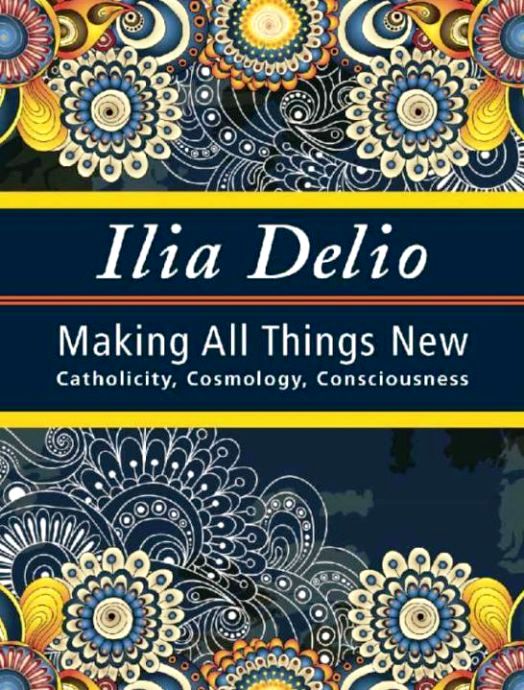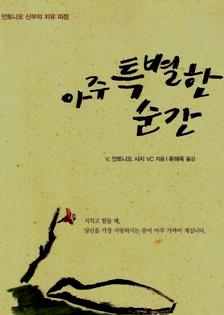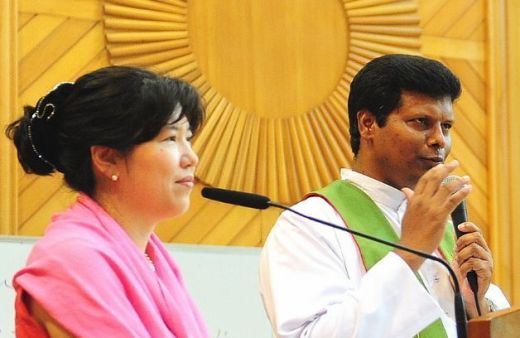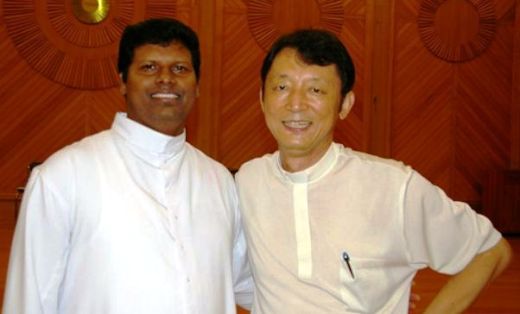
Introduction
This is a book about catholicity. I hope you will not put it down too quickly if you are not Catholic, because it is not exactly about the Catholic Church but about catholicity or awareness of how sun, moon, stars, Kepler, Saturn, maple trees, muddy rivers, amoeba, bacteria, and all peoples of the earth form a whole. Catholicity is from a Greek word, katholikos, which means “of the whole” or “a sense of wholeness.” It is the orientation of all life toward making wholes and thus toward universality or turning together as one. So, by way of introduction, this book is about wholeness and wholemaking that emerges from the nexus of catholicity, cosmology, and consciousness. The early Greeks coined the word catholic to describe attunement to the physical order, so that catholicity meant living in harmony with the stars. To live in catholicity was to have a sense of the cosmos or the whole order of things, including physical and spiritual things.
The word whole today is alluring – whole foods, holistic health, whole body workouts. It is a word that has become embedded in our cultural consciousness, despite our radically divided world. The longing for wholeness today speaks to something deep within the human person and nature itself. Are we whole by nature? Does wholeness emerge with the development of life, or is life an unfolding of an already existing wholeness? Today, physics speaks of a quantum whole and systems biology tells us that living organisms emerge as complex wholes. Modern science, therefore, suggests that we do not invent a whole; rather, the whole exists prior to anything else. We are to awaken to the whole we already are and deepen it by becoming more whole and unified through creativity, convergence, and consciousness.
Interestingly, the priestly author of Genesis had an implicit sense of catholicity even before the word was coined. “In the beginning God created heaven and earth,” he writes, “and the earth was a formless void” (Gn 1:1). This same sense would eventually be taken up by Christians for whom God and humanity, Alpha and Omega, are united in the person of Jesus Christ. The early Christians adopted the word catholic to describe the Church as disciples gathered in the name of Jesus Christ. To have a sense of the whole was to have a consciousness of Christ and to gather into community as one in Christ. Over time, the significance of catholicity shifted from wholeness to orthodoxy, especially as the Church grew into a major intellectual and cultural force in the Western world. Christians came to believe that catholicity meant expansion of the institutional Church throughout the world. Jean Maalouf wirtes:
Indeed, for a long period of time, Christians were through to believe that Catholicity meant the extension of the institutional Church to entire Christianity, and perhaps beyond. The hierarchy of the Church was not only a model but also a solid foundation for political power in the world. Universalism meant the extension of political, cultural and religious particularism. This was believed to be the more or less perfect image of the Kingdom of God on earth, whose center was out of this world.
Although catholicity began as a consciousness of the whole order of things (cosmos), over time it became detached from cosmology and conflated with the pope, Rome, and the institutional Church. Catholic universalism became equivalent to power, authority, and moral order. But as Maalouf writes: “The truth is that Catholicity is not an abstract concept, and it does not mean the universalization of one culture, but the universalization of the human being.” Catholicity does not mean that everyone is to become Catholic; rather, to be catholic is to be aware of belonging to a whole and to act according to the whole, including the galaxies and stars, earth, animals, plants, and human life. To paraphrase Saint Augustine: “You have made us for wholeness, O Lord, and our hearts are restless until they find their wholeness in You.”
While there are a number of outstanding theologians of the modern period who have written on catholicity, only a few have reconciled the dynamic of catholicity with the physical world, as science describes it today. In this respect Pierre Teilhard de Chardin, S.J., stands out as a voice of catholicity in the wilderness. In The Divine Milieu, Teilhard disclosed a new catholicity, a new awareness, which was both shocking and exuberant with life. By bringing together Christianity and evolution, he renewed catholicity in its deep cosmic roots. Sister Catherine R. O’Connor, CSJ, writes:
The sense of the sacredness of the earth and of man’s rootedness in it could be, in conjunction with ritual and sacrament, a rich source of nourishment for the human spirit. Teilhard’s particular thrust in the area of the importance of human action and passion in making ‘contact’ with God through the earth would add a new dimension to an approach to Christianity that still tends to be merely legal and moral.
Catholicity, as a consciousness of the sacred earth, of the universal spirit, and our longing for completion, is at the core of evolution. Teilhard had a sense of “deep catholicity,” an intrinsic wholeness at the heart of life yearning to become more whole in and through the human person. He described this wholeness as “Omega,” a oneness already within and yet ahead of us, drawing us onward toward greater unity in love. For Teilhard, modern science awakens us to a new sense of catholicity and empowers us to participate in evolution as co-creators of the emerging whole. Can we connect catholicity and cosmology in a way that revitalizes Christianity in an evolutionary universe? The answer to this question is essentially the basis of this book, which spearheads a new book series called Catholicity in an Evolving Universe by Orbis Books. This series will explore the dimensions of catholicity in an evolving universe with particular emphasis on theology, spirituality, science, the arts, the economy, and the environment. Catholicity reflects divine incarnational energy at the heart of cosmic evolution. The series seeks to illuminate the meaning and purpose of an unfinished universe, the role of human life in evolution, and the significance of Christogenesis (literally, “Christ birthing”) or the emerging, personalizing union of God, human, and cosmos.
My explorations in this book begin with certain premises: First, Catholicity is first and foremost linked with cosmology. It arises with the introduction of space into the physical order creating a “cosmos,” an orderly connectedness of reality. Catholicity, therefore, is based on the Greek understanding of cosmos as a three-dimensional sphere rather than an two-dimensional flat earth. Second, Catholicity is a function of consciousness. The rise of catholicity and cosmology takes place in the axial period in which the human person emerges as individual subject. Catholicity is awareness of the one amid the many through the human person whose consciousness “catholicizes” or unifies the many parts. Third, Catholicity is consciousness of the whole, an orientation toward universality or turning together as one. In this respect catholicity and universality are not equivalent although they are deeply connected. Although the Church identifies catholicity with universality, a more fruitful relationship between catholicity and universality begins with reorienting these within a wider cosmological and evolutionary framework.
I became aware of revisiting catholicity in light of an evolving universe through my friendship and collaboration with John Haughey, SJ, whose book, Where Is Knowing Going, awakened me to catholicity in a wider narrative. However, the work of French philosopher Remi Brague enabled me to understand catholicity in its relation to cosmology, as the Greeks first conceived this idea. To this end I examine catholicity on four different levels: (1) catholicity in nature, including Big Bang cosmology and quantum consciousness; (2) catholicity and the human person; (3) catholicity and Jesus; and (4) the institutionalization of catholicity or the Catholic Church.
Chapter 1 examines Brague’s principla thesis, namely, that we have lost the wisdom of the world because we have forgotten how to read the stars. I look at the emergence of the word cosmos in the work of Plato and the significance of cosmology for anthropology, as ancient cultures conceived it. Since the word catholic was adopted by the early Christians to define their understanding of church, I briefly explore its early usage by Ignatius of Antioch and Irenaeus of Lyons. I then look at the mutation of catholicity, as Christianity became a politicized religion under Constantine the Great, and catholicity was defined as orthodoxy, especially in light of the Arian crisis. Chapter 2 looks at catholicity in the medieval synthesis of microcosm and macrocosm and the loss of this synthesis with the rise of modern science. The powerful influence of Newtonian science on culture shifted the emphasis of catholicity from a cosmological whole to mechanistic lawfulness. I discuss the shift in catholicity from wholemaking to lawfulness, especially with the development of manual theology and the effects of mechanistic Catholicism on the alienation of the Church from the world.
The discoveries of twentieth-century science ushered in a new vision of the cosmos and the relationship of the human person to the cosmos. Insights from modern science, therefore, provide new ground to explore catholicity for twenty-first-century life. Chapter 3 develops catholicity as an intrinsic aspect of nature itself. Beginning with Big Bang cosmology, the primacy of energy, and quantum consciousness, catholicity in nature is viewed as the impulse in evolution toward greater wholeness. The term emergence best describes the unfolding of life from simple to complex life marked by a rise of consciousness. Hence, I speak of “Big Bang catholicity” insofar as the physical cosmos bears witness to an unyielding wholeness within it.
Chapter 4 focuses, more specifically, on quantum consciousness with a view toward understanding consciousness based on quantum physics. In the midst of the twentieth century Jesuit scientist Pierre Teilhard de Chardin described evolution as the rise of consciousness, indicating that mind is in matter from the beginning of the universe. Today, scientists and philosophers are supporting this insight, realizing that mind is more than the human brain and consciousness is more than the human mind. These ideas are explored in such a way that we begin to understand the connection between nature’s inner propensity for wholeness and the rise of consciousness. In other words, there is an intrinsic relationship between catholicity and consciousness. The rise of consciousness and complex wholeness simultaneously in nature undergirds the profound role consciousness plays in realizing wholeness on the human level. If nature bears within it what we might call an intrinsic catholicity, why is wholeness so difficult on the human level? I explore this question in terms of the complex human brain with its divided right and left hemispheres, conscious self-reflection, and language, which distinguishes the human species. The mark of the human person is verbal language and communication, and thus the freedom to express oneself. The human person is one of desire and decision. How we think, what we think, what enters or leaves our minds, where we focus our minds – all shape our actions and, in turn, our world. On the human level where there is free will and intellect, the whole is not a given; it is a choice in relation to God, neighbor, and earth community. For the Christian the choice for wholeness is embedded in the gospel life, following the words of Jesus: “I have come so that you may have life and have it to the full”(Jn 10:10). We are to focus our minds on the whole and choose the whole for the sake of abundant life.
Understanding catholicity in its organic and cosmological context sheds new light on the person of Jesus Christ and the significance of his life for the emergence of the Catholic Church. Chapter 5 examines the spirit of creative wholeness that marks the life of Jesus in his public ministry. To better understand this creative wholeness, I use Teilhard de Chardin’s paradigm of Christogenesis, or the evolutionary emergence of Christ. Teilhard identified Omega with Christ and posited a third or organic nature of Christ, meaning that God is incarnate from the beginning of the universe. If Christ Omega is the goal of evolution (following the Pauline notion of “all things in Christ”) then the goal is already present in the unfolding process of life. Christ the evolver (or Christ in evolution) and Christ Omega (Christ as goal of evolution) are one and same and come to explicit consciousness in the person of Jesus of Nazareth. I look at the ministry of Jesus in terms of catholicity and discuss the sacraments of baptism and Eucharist as new forms of relatedness with Christ in an expanding field of compassionate love.
The diminishment of catholicity by institutionalization and alienation from worldly affairs relates to the development of Catholicism’s teaching on the four last things: heaven, hell, death, and final judgment. Chapter 6 revisits these four quadrants of Catholic belief in the wider framework of evolution and Christogenesis. In particular, Teilhard’s emphasis on Christianity as an evolutionary, world-affirming religion is highlighted, and his “mysticism of action” is discussed. I look at the constraints of institutional catholicity against the backdrop of a wider cultural catholicity, exploring jazz fests, social media and baseball as cultural ritual events where catholicity is vibrant. My particular interest in computer technology and its impact on the shape of humankind is then examined in light of the four last things. The rapid development of computer technology today is seeking to fill a religious void, extending the religious self into the cyber world so that the last four things no longer seem to constrain human destiny.
The advantage of exploring catholicity within a wider cosmological and cultural framework is that it provides new language and new paradigms to explore the catholicity of the institutional church. Chapter 7 examines the Church as an open system, since the Church is an organizational system, and the dynamics of its organization affects its function and outreach to the world. The term open system comes from the biological sciences and refers to openness of the system to the environment and, as such, its capacity to self-organize. Using Teilhard’s notion of the Church as a new phylum of christified persons in evolution, I creatively imagine what an open-systems Church might look like from the point of administrative organization to the development of theology as open-systems theology. I explore briefly the significance of open-systems theology for the discovery of truth in an evolutionary world.
Since my aim is to kindle a new consciousness of catholicity for an evolutionary age, I seek to discover a deeper meaning of this consciousness for the Church and the world today. Chapter 8 takes up Saint Paul’s injunction to “put on the mind of Christ” and considers what this means in terms of quantum consciousness and spirituality. Here I focus more specifically on training the mind for unified consciousness. Insights from the Buddhist nun Tenzin Palmo are helpful, as well as the writings of Etty Hillesum, who died at a young age in a Nazi concentration camp. Etty’s bridge between inner world and outer world through a unified consciousness in God illuminates the inner capacity of the human person to think widely and deeply even in the midst of suffering and violence. She also shows us how expansion of the mind-soul can influence the world around us. Centuries before Etty, Francis of Assisi came to similar insights through a deep, christic mindfulness, and I briefly explore his path to a “uni-verse” through the centrality of love and the poverty of letting go into a wider embrace of life.
Finally, after searching the lines of catholicity from the Big Bang to quantum consciousness and evolution, to the life of Jesus and the emergence of church from the patristic era to the postmodern age, Chapter 9 revisits the meaning of catholicity in light of scientific insights and cosmology and asks, What are we called to today, as citizens of the universe, as followers of Jesus Christ and as members of the institutional Church? The final chapter seeks to clarify the meaning of catholicity in its various levels (nature, person, Jesus, and Church) and to examine briefly models of catholicity in our current age. Of the four models discussed in this chapter (Pope Francis, Barbara Marx Hubbard, the Dalai Lama, and the Leadership Conference of Women Religious), I want to highlight the spirit of Pope Francis. Elected to the papacy following the resignation of Pope Benedict XVI, Pope Francis (Jose Maria Bergoglio), in his late seventies, brings a new spirit to the Church that reflects a consciousness of catholicity that we explore here. His is an inner spirit of freedom grounded in the love of God, guided by the gospel message of the new kingdom at hand, and open to a world of change. He desires a Church on the margins, where the poor and the forgotten can be brought into a new unity; a Church that advocates life at all costs and promotes peaceful life in a war-torn and violent world; a Church that models justice in an age of greed, consumerism, and power; a Church centered on the risen Christ, empowering a consciousness of the whole. This is a church leader who desperately wants to breathe a new spirit of catholicity into a world dying for wholeness and unity.
But the numbers speak otherwise. Mark Gray of the Center for Research in the Apostolate (CARA-Georgetown) states that at the end of 2014, “about 28.9 million people in the U.S. who were baptized and raised Catholic… no longer self-identify as Catholic.” This is equivalent to more than 900,000 people each year and is slightly larger than the number the Church added in baptisms and receptions into full communion in 2012. Gray’s statistics on all levels of Catholic life show downward trends and no signs of improvement. So while Pope Francis is seeking to expand the Church’s presence in the world, catholicity seems to be diminishing due, in part, to a growing irrelevance of institutional religion.
There is an urgency today to reconnect cosmology and catholicity, no as abstract concepts, but as the reconciliation of modern science and religion. The Catholic Church, with its core incarnational foundation can play a major role in this renewal. “Science develops best,” Saint John Paul II wrote, “when its concepts and conclusions can be integrated into the wider human culture and its concerns for ultimate meaning and value.” Religion, too, develops best when its doctrines are not abstract and fixed in an ancient past but integrated into the wider stream of life. Albert Einstein once said that “science without religion is lame and religion without science is blind.” So too, John Paul II wrote: “Science can purify religion from error and superstition; religion can purify science from idolatry and false absolutes. Each can draw the other into a wider world, a world in which both can flourish.” Teilhard de Chardin saw that dialogue alone between the disciplines is insufficient; what we need is a new synthesis of science and religion, drawing insights from each discipline into a new unity. In a remarkable letter to the direction of the Vatican Observatory, John Paul II wrote:
The church does not propose that science should become religion or religion science. On the contrary, unity always presupposes the diversity and integrity of its elements. Each of these members should become not less itself but more itself in a dynamic interchange, for a unity in which one of the elements is reduced to the other is destructive, false in its promises of harmony, and ruinous of the integrity of its components. We are asked to become one. We are not asked to become each other…. Unity involves the drive of the human mind towards understanding and the desire of the human spirit for love. When human beings seek to understand the multiplicities that surround them, when they seek to make sense of experience, they do so by bringing many factors into a common vision. Understanding is achieved when many data are unified by a common structure. The one illuminates the many: it makes sense of the whole… We move towards unity as we move towards meaning in our lives. Unity is also the consequence of love. If love is genuine, it moves not towards the assimilation of the other but towards union with the other. Human community begins in desire when that union has not been achieved, and it is completed in joy when those who have been apart are now united.
The words of the late pope highlight the core of catholicity: consciousness of belonging to a whole and unity as a consequence of love. Yet, our world is divided, and the divisions are not abstract; they are real and deepening. They are the heart-wrenching divisions of religious wars, economic gaps, racial hatred, fears of terrorism – division upon division – to the extent that our only hope is another world, whether it is the otherworldliness of heaven or the cyber world of virtual reality. Nature reminds us, however, that in our cosmic roots we are already one. Can we learn from nature how to create a unified world? Can religion inspire an evolution toward unity? Can we reimagine Christian life in an evolving universe? The world is not a given but a gift to create. Catholicity invites us to wake up, open our eyes, and reach for the stars to create a new world together by becoming a new community of life.
Disclaimer: 여기에 실린 글은 copyright가 된 책, 기사를 ‘발췌, 전재’를 한 것입니다. 모두 한 개인이 manual typing을 한 것이고, 의도는 절대로 저작권 침해가 아닌, fair use의 정신을 100% 살린 것입니다. 의도적으로 ‘시간적인 제한, 독자층의 제한’을 염두에 두었고, 목적은 단 한 가지 입니다. 즉 목적을 가진 소수 group (church study group, bible group, book club) 에게 share가 되었습니다. password protected가 되었는데, 만일 이것이 실패를 하면 가능한 시간 내에 시정을 하도록 하겠습니다.
 책의 내용은 류신부님의 글이 아니고 ‘안토니오 사지’ 라는 ‘유명한’ 인도출신 신부님이 한국에서 지도한 ‘치유피정’의 강의부분을 아주 매끈하고 유려한 한글로 정리한 것이다. 또한 인상적인 것은 2013년에 첫 출판 후 2017년까지 18 쇄의 중판을 거듭한 것을 보면 아마도 ‘베스트셀러’ 급의 ‘좋은 책’이 아닐까 추측도 해 본다.
책의 내용은 류신부님의 글이 아니고 ‘안토니오 사지’ 라는 ‘유명한’ 인도출신 신부님이 한국에서 지도한 ‘치유피정’의 강의부분을 아주 매끈하고 유려한 한글로 정리한 것이다. 또한 인상적인 것은 2013년에 첫 출판 후 2017년까지 18 쇄의 중판을 거듭한 것을 보면 아마도 ‘베스트셀러’ 급의 ‘좋은 책’이 아닐까 추측도 해 본다.

